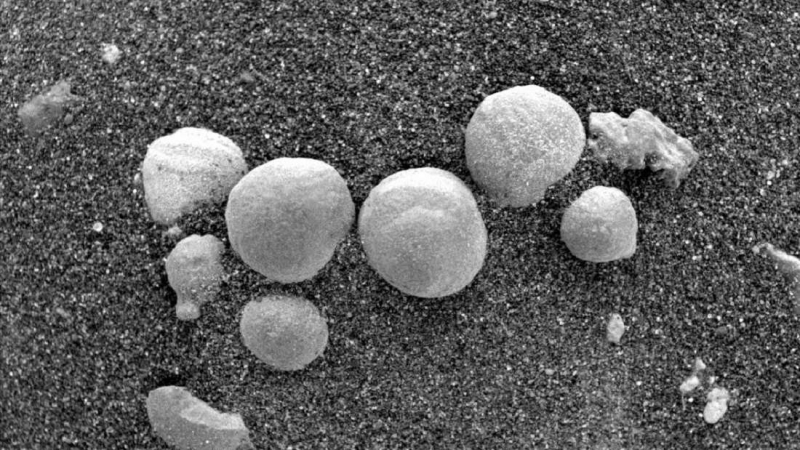
From NASA’s rovers and landers to David Bowie, one question about the Red Planet remains sadly unanswered. Is there life on Mars? Now a controversial review paper has claimed that the answer is a resounding yes. And it's definitely going to start a big debate.
The paper includes images taken by Curiosity and Opportunity of what the researchers are calling fungi, lichens, and algae growing on Mars. So, are there really mushrooms growing on Mars, like some are reporting?
The paper, titled Evidence of Life on Mars? is published in the first edition of a brand new journal, the Journal of Astrobiology and Space Science Reviews, and looks at almost 200 peer-reviewed studies debating curious structures, seasonal changes in methane, and the possibility that life has traveled between planets. The journal itself calls the evidence controversial and had six independent scientists and eight senior editors peer review it, three of which rejected it.
More than controversial, the evidence in the paper is circumstantial, a fact that is admitted in the conclusion but not before the researchers are compared to Galileo and Einstein in being persecuted for challenging an accepted status quo. (Note: We still have not found a single unequivocal piece of evidence that shows life on Mars.)
The journal's official position is "Evidence is not proof and there is no proof of life on Mars," and that the evidence (ie the images) listed in the paper could be caused by something by other than life. The researchers strongly disagree, however, and despite its previous statement, the journal's official press release is rather sympathetic to the researchers.
"Our article, Evidence of Life on Mars?, is not based on our opinion" co-author Dr Regina Dass, from the School of Life Sciences at Pondicherry University, said in the press release. "We review nearly 200 research studies conducted by over 500 scientists, many of whom work at NASA; and all this work collectively weighs in favor of biology."
"We admit, we don't have a smoking gun," she adds. "No photos of cells or cellular structure. There is no definitive proof, only a lot of evidence which shouts: Biology."
The debate on this evidence has been raging for decades, since NASA’s Viking landers touched down on Mars in 1976 and conducted two tests looking for biological results in its soil. The first test came back positive, while a follow-up test a week later came back negative. There are both biological and geological explanations for this curious discrepancy.
This new research lacks consistency on two particular points. The first is an inconsistency on expertise in the field. On one hand, it argues how vital it is that a large number of experts agree that these unusual formations spotted by Opportunity and Curiosity are evidence of lichens and mushrooms. On the other, it also dismisses a large number of experts who were skeptical of the Viking biological findings, or disagree that complex fungi could live on Mars today.
The second contentious issue refers to a potential connection to Earth. In the paper, the researchers suggest life on Earth could have traveled to Mars. Their argument is based on how similar certain Martian sites look to Earth’s objects of biological origin. But when asked about how this life could not only survive, but thrive on a frigid world that has no water or oxygen, their argument is: “Mars is an alien world, and any life on Mars may have evolved unique alien characteristics which enable them to survive.”
The oxygen point is particularly tricky. There are certain microbes that can happily live with no oxygen, limited water, and even survive being bombarded by radiation. But if we think of complex life, we need to remember that only three multicellular species have ever been observed living with no oxygen on Earth, and they are microscopic. Not like these Martian mushrooms that were photographed by a rover.
In conclusion, there is no definite proof. Is there life on Mars? We don't know. There’s only a lot of evidence which shouts: we need more observations.
























